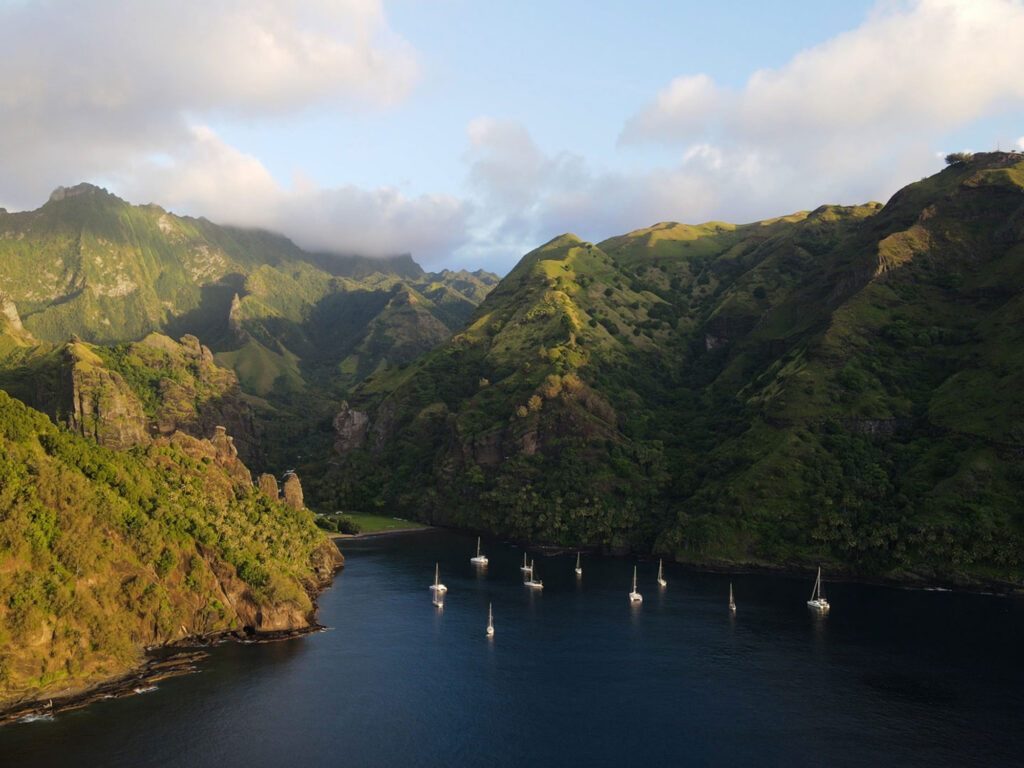
Why were we in French Polynesia during cyclone season and an El Niño year? Well, our plan was to sail to New Zealand after six months of cruising in Tahiti, but we fell in love and stayed. So, we ran into cyclone season, which is from November through April in the South Pacific.
The behavior of cyclones changes during El Niño because of differences in sea surface temperatures and atmospheric conditions, influencing the frequency, intensity and paths of the storms. El Niño started in 2023 and continued into 2024, giving the central and eastern parts of the Pacific Ocean warmer sea surface. This can shift the cyclone formation zones eastward. Islands that are typically less affected by cyclones, such as the Southern Cook Islands and French Polynesia, have higher risk.
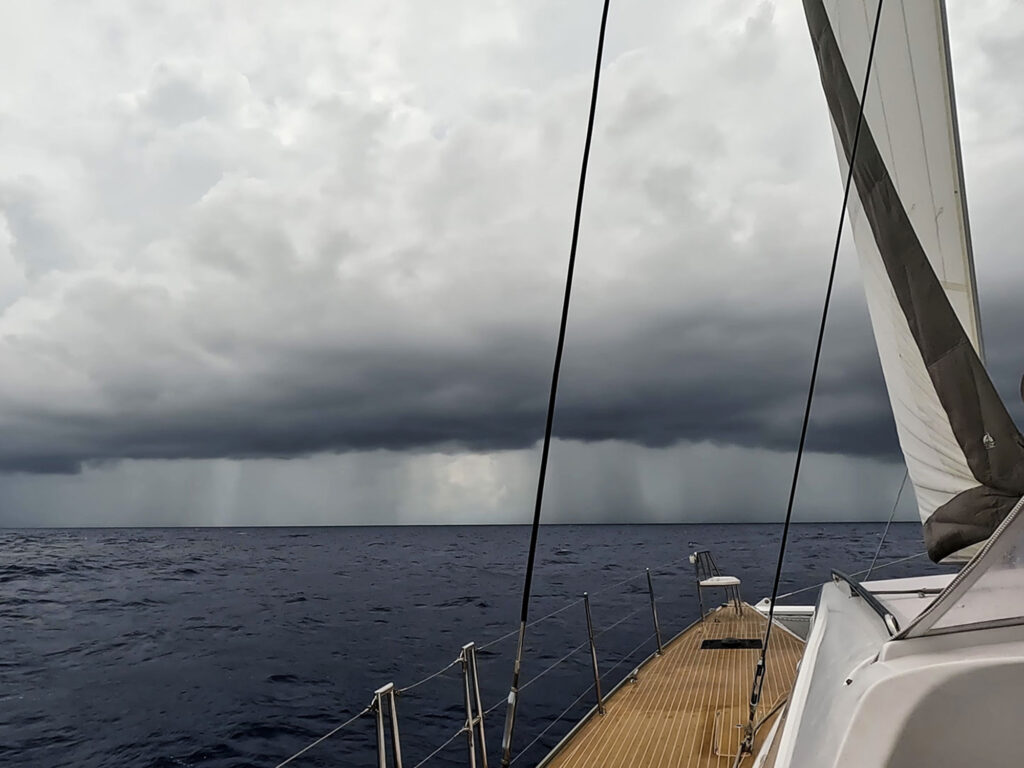
The Marquesas Islands are outside the typical cyclone belt; their only close call was Tropical Cyclone Nisha-Orama in February 1983. It developed north of the Marquesas during an El Niño year and had sustained winds of 115 mph in the Tuamotus. Areas more frequently affected by cyclones include Australia, New Zealand, Vanuatu, Fiji, Samoa and Tonga—but it is not impossible for cyclones to affect the Marquesas if conditions are right, such as during El Niño years.
Preparation in Tahiti
After a wonderful time diving with humpback whales in Mo’orea, we went to Tahiti to prepare the boat for the journey east to the Marquesas. Wanderlust, our Seawind 1600 catamaran, is equipped with daggerboards. It adeptly sails upwind. This feature, combined with the robust design and comfortable living space, has made it the ideal vessel for us in our long voyages across challenging waters.
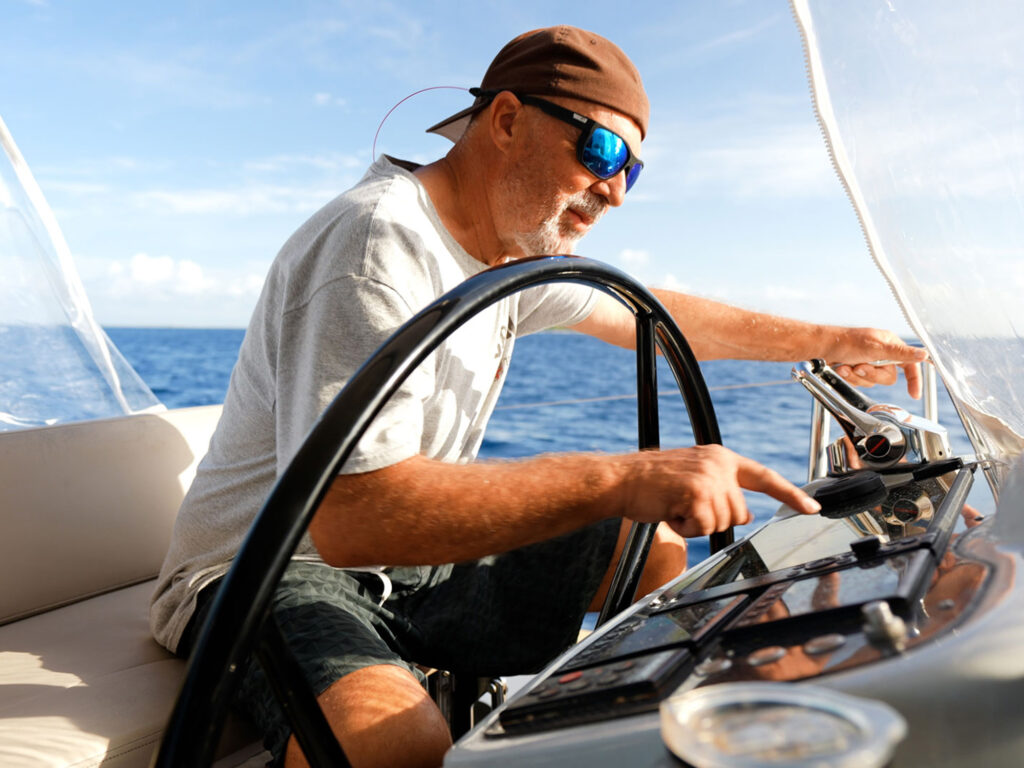
In Tahiti, we inspected the rigging and systems, and unfortunately found cracked wires in the cap shrouds and the cross-beam cable (the martingale). The good news was that there are excellent riggers in Tahiti, but the bad news was that the cable had to come from Australia with a lead time of at least two weeks that turned out to be a month. By then, the easterly trade winds would be in full force and on our nose.
Meanwhile, we stocked up at the island’s markets, which are brimming with fresh produce. At every visit, we packed our bags, ensuring our boat was ready to face whatever the ocean had in store.
Papeete Marina
Papeete Marina is on the northwest side of Tahiti, which means it’s open to northern wind and swell. Large waves enter the basin, creating a significant commotion, chafing and breaking dock lines, ripping off docks or surging them over the pilings. In cyclone season, when the northern swells are more frequent, boats are often asked to seek shelter at anchor. As the inclement weather was approaching, we could already feel some of its effects. The monohulls started to behave like bucking broncos.
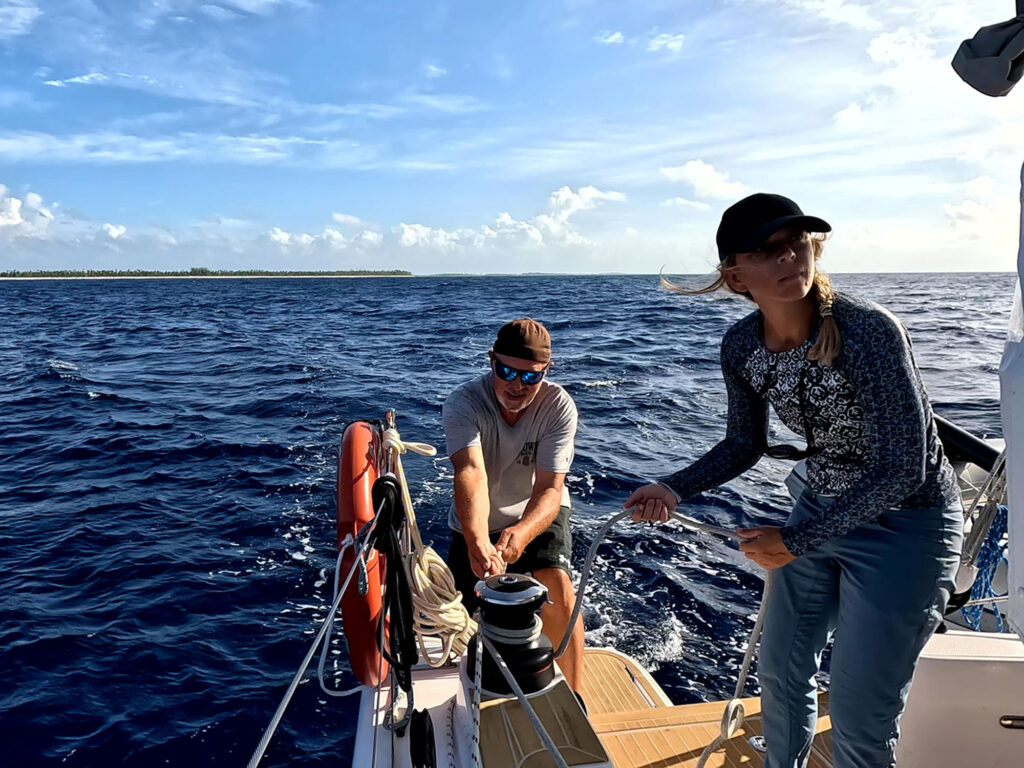
Finally, our cables for the repair arrived, and Wanderlust was ready.
Strategy
We tossed the lines on December 4 with a plan to sail to Fakarava, setting us up for a good angle to the Marquesas, but the next round of squalls was hot on our tail so we decided to pull into Tikehau, 150 nautical miles to the northwest. The atoll’s sparse population and natural beauty provided a serene backdrop and time to plan the journey ahead. We were held by the weather, but it wasn’t bad at all.
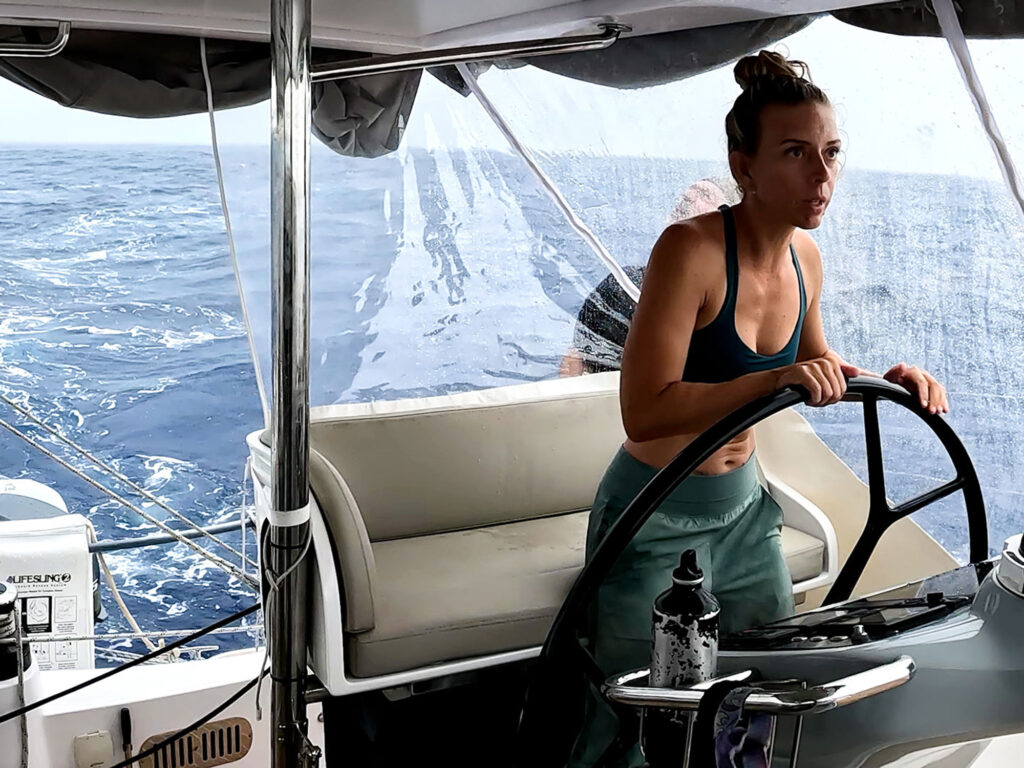
A couple days later, the weather changed, and we had a spectacular sail during the day. Wanderlust chugged miles quicker than expected, and we realized we would arrive in darkness—when it is unsafe to enter the atoll. We furled our screecher and set the jib to slow down a knot or two. A few hours later, the wind disappeared and was replaced by torrential rain. We had to motor and arrived at the atoll’s pass almost two hours after the desired slack tide. Not a real problem with two 80 hp engines, but it could have been with a smaller boat.
Fakarava greeted us with the rare convenience of a fuel dock. However, we did not make use of it, thinking we would be fine with the fuel we had. Rookie mistake. This amenity would have allowed us to bypass the cumbersome process of ferrying fuel in 5-gallon jerry cans, saving time, effort and my rotator cuffs, which I later destroyed in Hiva Oa by shlepping more than three dozen of them.
Fakarava hosts a vibrant underwater world and UNESCO-protected status, with unbelievable diving at the south pass, the famous wall of sharks, and the grouper spawning under a full moon in July. We were fortunate enough to enjoy that during our previous stay. This time around, the squally weather continued, and we did not even take a dip in the water.
Final Leg to Fatu Hiva
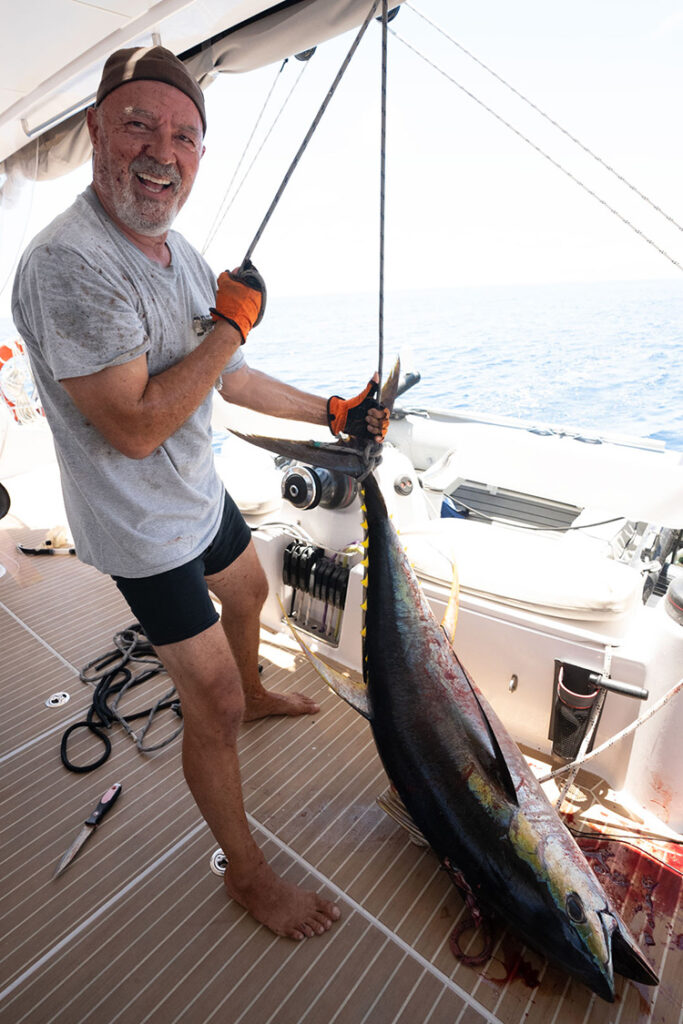
With a northwest wind, we sailed close-hauled for three days. Then the wind disappeared, and we motored in flat-calm waters that are unusual for that time of the year. The silver lining was that we were able to land a 143-pound yellowfin tuna that fed us and our friends delicious sushi and tuna tartar for months. And we learned another important lesson: While trying to lift the tuna using the main winch, I may have used the wrong size rope (I admit nothing). The winch stripper arm broke. It was a most expensive tuna, too.
On day four as the sun was starting to set, the southernmost island of the Marquesas, Fatu Hiva, presented its rugged landscape: the perfect gift on Christmas Eve. Giant clouds resting on jagged peaks, the sun’s evening light casting a golden hue on its face. A distant squall reminding us of what we’d been through. We had navigated Wanderlust about 1,000 nautical miles from Tahiti, upwind, to this Jurassic-like sanctuary for cyclone season. In the day’s final light, we anchored in the stunning Bay of Virgins, a spot already marked on the chart plotter from our previous visit.
Fatu Hiva
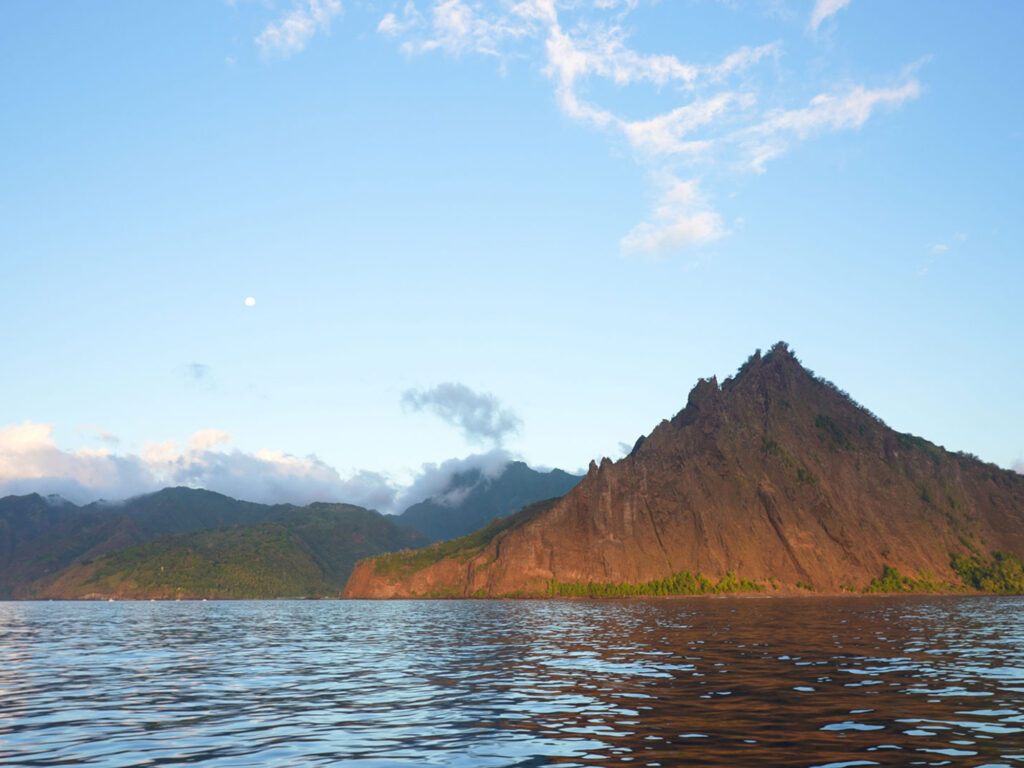
This land boasts a rich cultural heritage, friendly people and breathtaking landscapes. After spending some time on the island, we found ourselves reverently walking paths surrounded by raw beauty. Eventually, we stopped trying to articulate our awe, and we became part of the larger tapestry of life and nature. Gently running our fingers on the leaves of holy basil to release the magical scent, inhaling the pungent whiffs of drying copra, and bowing over gardenia flowers to take in their exhilarating aroma. Long-tail tropical birds circled above us in the backdrop of lush volcanic peaks.
Kahoha was the greeting we exchanged with the locals. Even Yoda, our dog, became a beloved figure on the island, responding joyously to calls from across the river. We made friends, bartered rope and other items for fruits, and for wild pig and goat meat. We felt a profound connection to this island.
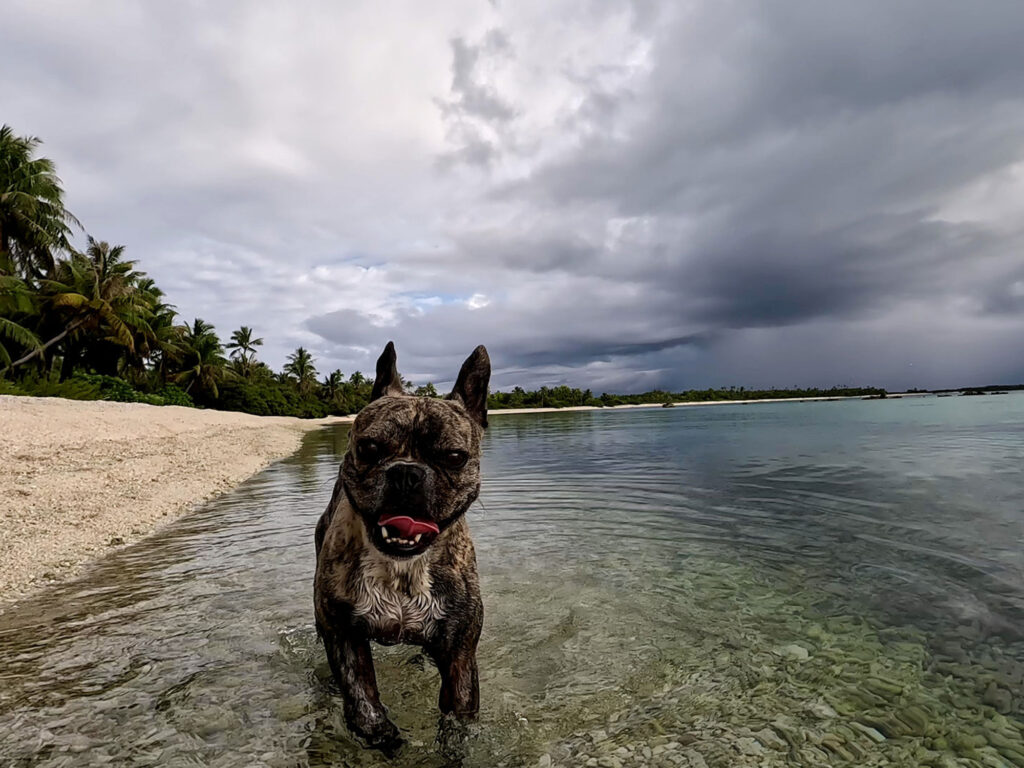
Getting there was worth every bit of effort it took. We lived an unforgettable adventure that brought us closer to each other.








